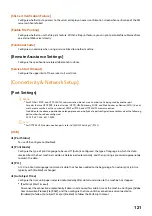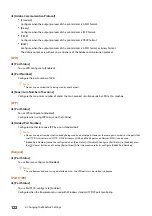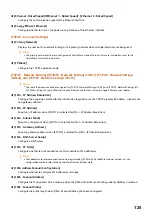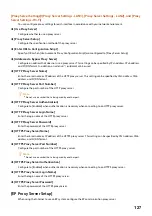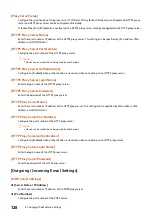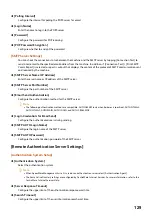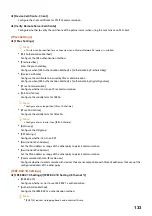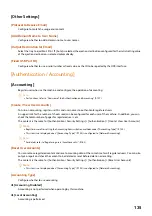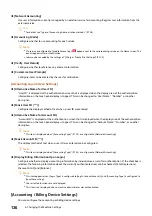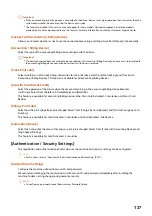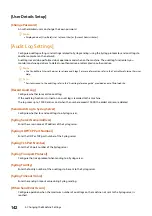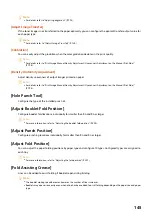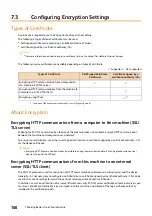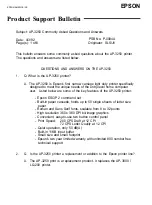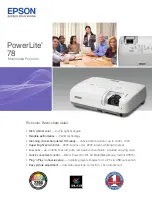
135
[Other Settings]
[Protocol to Receive Email]
Configure to match the usage environment.
[Add Domain Name to User Name]
Configure whether to add a domain name to user names.
[Output Destination for Email]
Select the tray to eject Mail Print. If [Auto] is selected, the ejection destination configured for the initial setting value
of the ejection destination is selected automatically.
[Fixed USB Port ID]
Configure whether to use a serial number or fixed value as the ID to be reported by the USB interface.
[Authentication / Accounting]
[Accounting]
Register users who use the machine and configure the operation of accounting.
Refer
For functions, refer to "Overview of the Authentication and Accounting" (P.157).
[Create / View User Accounts]
To turn on accounting, register user IDs and user names to authenticate registered users.
An upper limit for the number of sheets used can be configured for each user of the machine. In addition, you can
check the total number of pages for registered users, etc.
The content is the same for [Authentication / Security Settings] > [Authentication] > [Create / View User Accounts].
Note
Register a user after setting the Accounting Administration methods under "[Accounting Type]" (P.135).
This item is not displayed when "[Accounting Type]" (P.135) is configured to [Network Accounting].
Refer
For details, refer to "Registering users (Local Accounts)" (P.162).
[Reset User Accounts]
You can remove registered content and reset accounting data at the same time for all registered users. You can also
output a report and check the content to be deleted or reset before deletion or resetting.
The content is the same for [Authentication / Security Settings] > [Authentication] > [Reset User Accounts].
Note
This item is not displayed when "[Accounting Type]" (P.135) is configured to [Network Accounting].
[Accounting Type]
Configure whether to use accounting.
[Accounting Disabled]
Accounting is not performed when operating by this machine.
[Local Accounting]
Accounting is performed.

